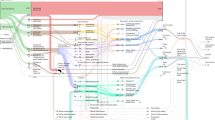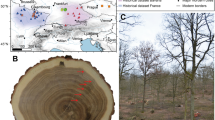Abstract
COMPLETE eradication of wood-boring insects in timber in buildings is difficult to achieve, particularly in structural members of large dimensions, often inaccessible for thorough surface treatment. Moreover, the value of insecticidal fluids and of fumigants is restricted by the impenetrability of many timbers and varies according to the species of insect and extent of attack. Radiation treatments may offer a means of reducing this problem of penetration, especially in large built-in timbers, such as oak infested by the death-watch beetle, but before their possible application in practice can usefully be considered, accurate data are required upon the effect of different dosages on the various stages of development of the insects.
This is a preview of subscription content, access via your institution
Access options
Subscribe to this journal
Receive 51 print issues and online access
$199.00 per year
only $3.90 per issue
Buy this article
- Purchase on SpringerLink
- Instant access to full article PDF
Prices may be subject to local taxes which are calculated during checkout
Similar content being viewed by others
References
Bletchly, J. D., Xth Int. Congr. Ent., Canada, 1956 (in the press).
Author information
Authors and Affiliations
Rights and permissions
About this article
Cite this article
BLETCHLY, J., FISHER, R. Use of Gamma Radiation for the Destruction of Wood-boring Insects. Nature 179, 670 (1957). https://doi.org/10.1038/179670a0
Issue date:
DOI: https://doi.org/10.1038/179670a0
This article is cited by
-
Einflu\ der λ-Strahlung auf einige Eigenschaften von Spanplatten
Holz als Roh- und Werkstoff (1964)
-
Effect of Exposure to Gamma-Rays on the Hygroscopicity of Sitka Spruce Wood
Nature (1957)



